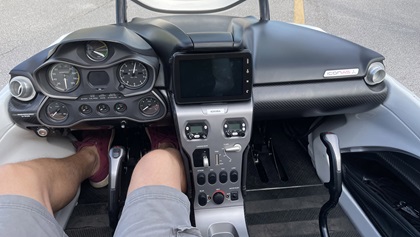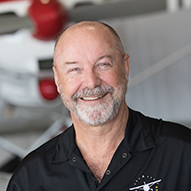A new twist on an old dream
Jack Brown's Seaplane Base adds an Icon A5
A wall-mounted air-conditioner hums in the background, spewing ice-cold air into the modest office space. Dark wood-paneled walls stand in stark contrast to the brilliant sunshine just outside. Florida’s Lake Jessie lies no more than four feet below Ben Shipps’ seat, its languid waters lapping softly against the dock pilings that support his domain.
From a leather chair set behind his desk, Shipps, the owner of Jack Brown’s Seaplane Base shares his philosophy of flight training. The crux of his perspective boils down to a single sentence. “It’s amazing the amount of quality learning that can take place in a short amount of time when you do have a well thought out cockpit, an easy airplane to fly, and your training environment is just a few miles away.”
Interestingly enough, both the J–3 and the Icon A5 qualify as light sport aircraft. The Cub is a legacy machine, meeting the rules by happenstance. The A5 was purposefully designed and built to sit squarely in the LSA category. Yet either can be flown by sport, recreational, private, commercial, or airline transport pilots. Whether they’re doing initial training or have many hours in seaplanes, the door is open to either airframe—both literally and figuratively.
There are five J–3s on site. All are well used and much loved. Students and certificated seaplane pilots alike flock to Jack Brown’s Seaplane Base from all corners of the globe to log time in the most basic of aircraft. All five remain in their original yellow-and-black paint scheme.
In recent years the training facility has added a Maule to the fleet, as well as a Super Cub. A second Super Cub will be added to the lineup soon. Yet, as popular, reliable, and iconic as these steel tube airframes are, the Icon A5 provides a glimpse into a modern way of designing, building, and operating an aircraft that simply wasn’t a consideration in the first half of the twentieth century when the J–3s were being produced.
 While the J–3 pilot learns to use the instrument panel sparingly, preferring to look outside the aircraft for visual cues to determine attitude and the sound of the engine to fix power settings, the Icon A5 pilot quickly learns to focus primarily on the angle of attack indicator that sits at the top of a beautifully laid out panel.
While the J–3 pilot learns to use the instrument panel sparingly, preferring to look outside the aircraft for visual cues to determine attitude and the sound of the engine to fix power settings, the Icon A5 pilot quickly learns to focus primarily on the angle of attack indicator that sits at the top of a beautifully laid out panel.
“It gives you more situational awareness on the state of the wing,” Shipps said of the angle of attack gauge. “It gives me more peace of mind than even flying a J–3 in terms of low altitude and energy management.”
The Icon A5 also sports a modern Rotax 912 engine that sips unleaded fuel at a meager rate. Its panel is well appointed. Carefully designed to achieve not just a pleasing look, the instrumentation is eminently usable and easy to access. Everything is well placarded and within easy reach—a compliment that does not extend to the oddly placed carb heat handle on a J–3. The Icon A5 also boasts a ballistic parachute like its larger, considerably faster cousins, the Cirrus series of aircraft.
Beyond the technology and building materials resulting from the 70-year discrepancy between the design and construction of the J–3s and the Icon A5, there is one aspect of flight the two airframes have in common: The fun factor for each is simply off the charts. It is virtually impossible to fly either aircraft without experiencing a moment of Zen-like joy along the way, which leads the pilot to complete the flight wearing an industrial-size grin that simply will not go away.

The appeal of the utilitarian nature of a thoroughly modern amphibian as an augmentation to the classics on straight floats hasn’t escaped Shipps’ notice either. “I’d say 99 percent of our clients who come through here, they say, ‘Man, I’d love to have a seaplane. I just don’t live on the water.’”
Perhaps that is the great benefit of this new addition to the Jack Brown’s flight line, as pilots are exposed to the water only to realize the Icon A5 presents them with the option of landing on the water, or the land. Storage might involve tucking the aircraft into a local T-hangar or folding the wings to put it in the garage at home. It’s possible this sexy new addition to the operation just might open a whole new audience to the joys of seaplane operations when combined with the convenience offered by land-based airplanes.
As he theorizes on how his future clients might react, Shipps considers the possibility that a percentage of them may be saying to themselves, “This isn’t so far-fetched. I could make seaplane flying part of my life.”
There is only one way to know for sure: You have to fly one, or the other, or both. Fortunately, now you can. And you can do it in one place on the same day.




